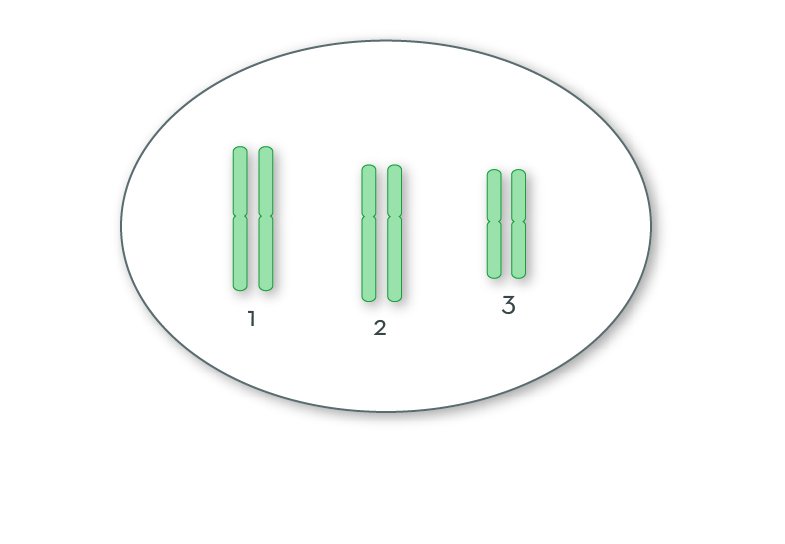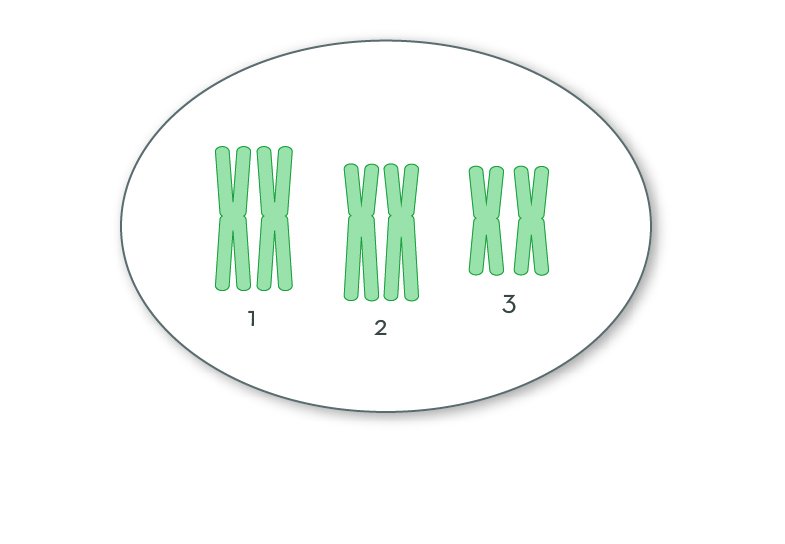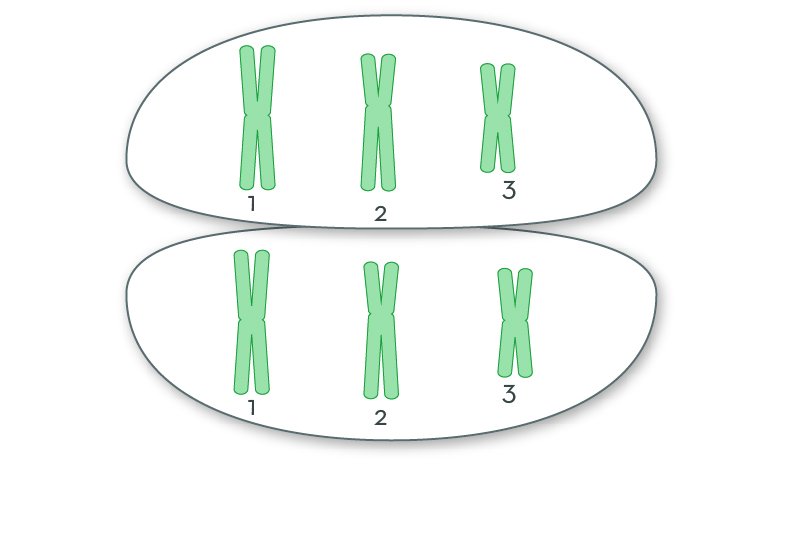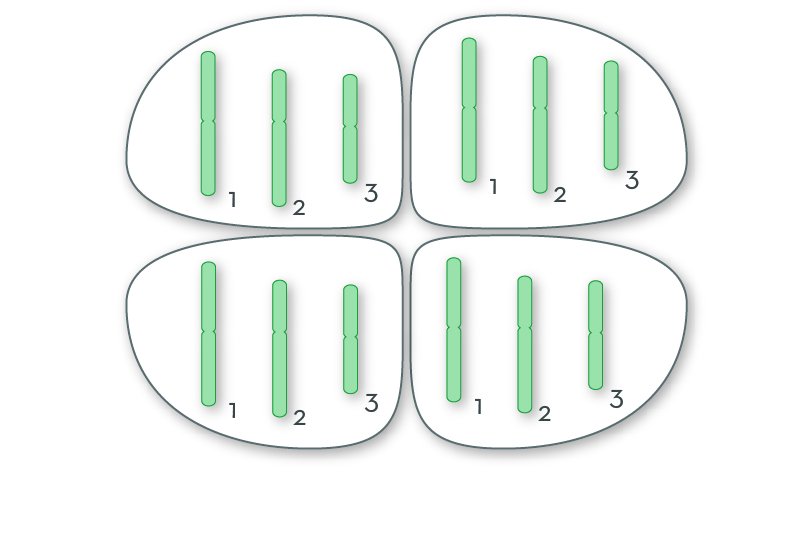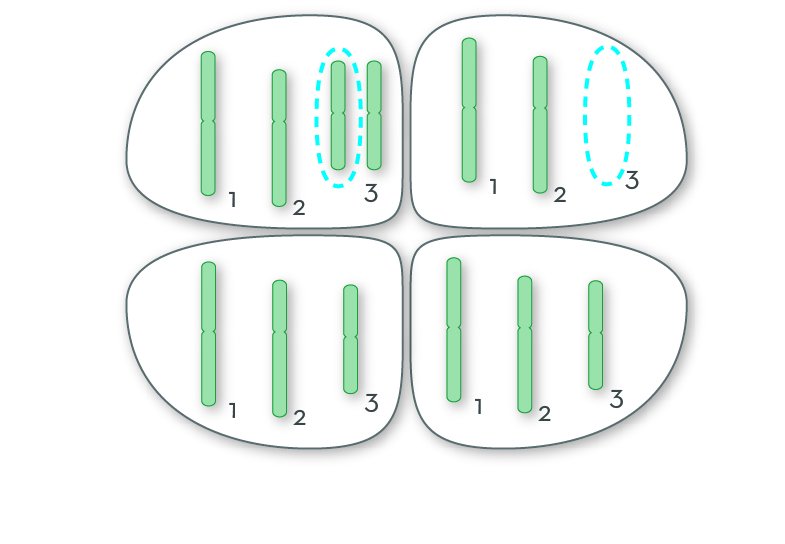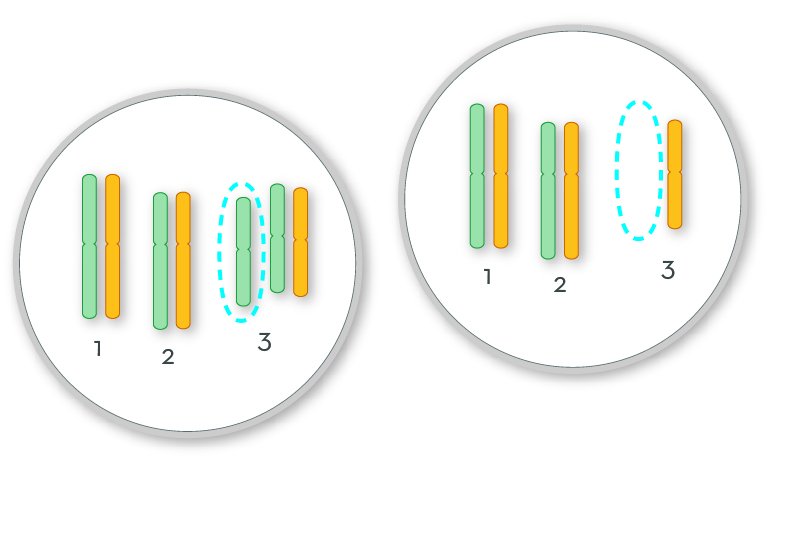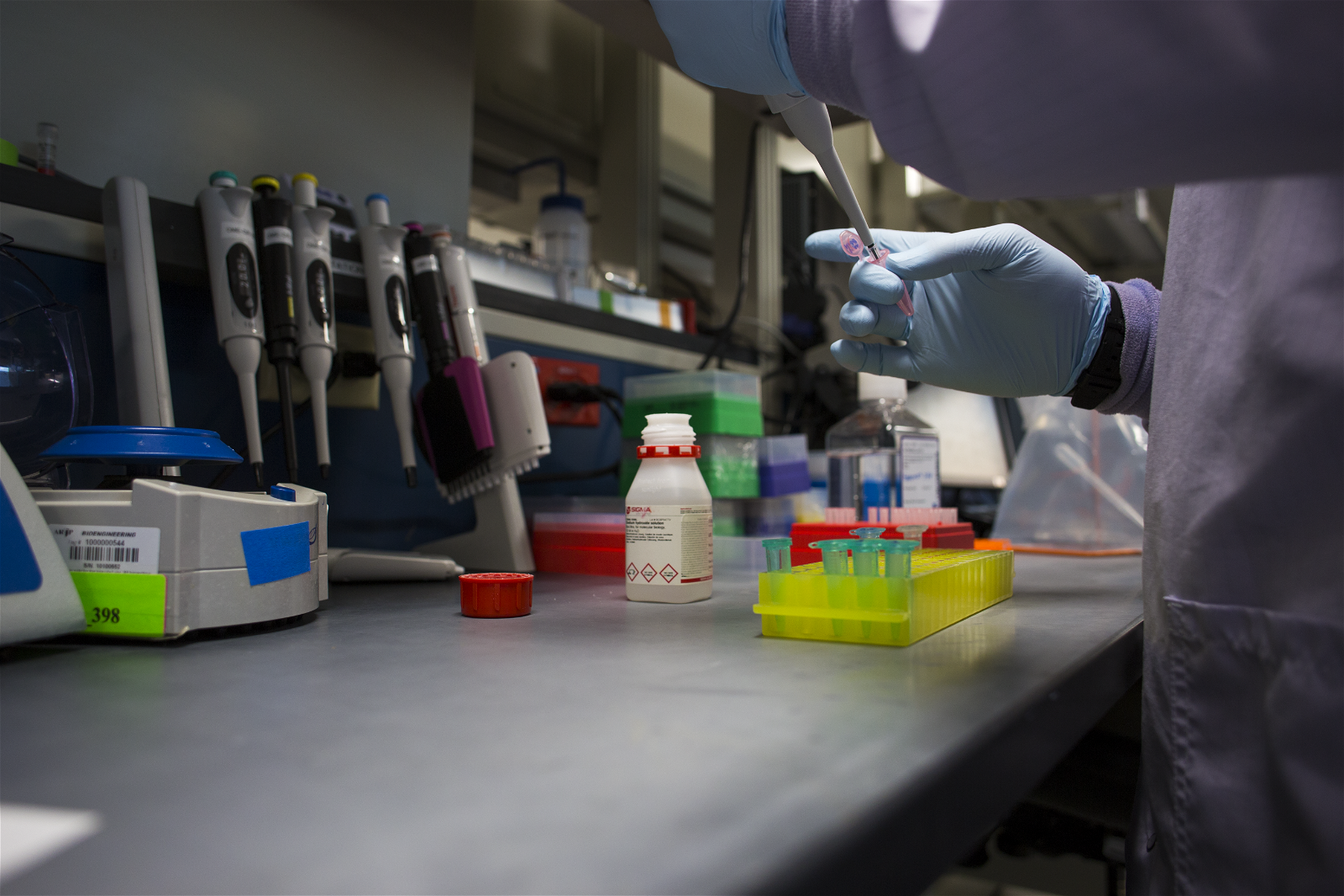Aneuploidy
A genetic condition where someone has either too many or two few chromosomes is called aneuploidy (AN-yoo-ploy-dee).
A complete set of genetic information includes 23 pairs of chromosomes, which adds up to 46 chromosomes total. This number includes 22 pairs of autosomes, and one pair of sex chromosomes. Autosomes are numbered according to their size: chromosome 1 is the largest, and chromosome 22 is the smallest. The sex chromosomes are called X and Y. People with two X chromosomes (XX) are female, and those with an X and a Y (XY) are male—with some exceptions.
There are two common types of aneuploidy: monosomy (MOHN-oh-soh-mee) and trisomy (TRY-soh-mee). People with monosomy are missing a chromosome. So, for a particular chromosome, only one is present instead of two. People with trisomy have an extra copy of one of their chromosomes. So, for example, trisomy 18 means that there are 3 copies of chromosome 18.
Each chromosome has many genes. The features of each type of aneuploidy are unique, and they are connected to the specific genes on the affected chromosomes. For some genes, it is important to have two copies. With too many or too few copies of a gene, the cell has trouble making the proper amount of the gene product.

A complete set of genetic information includes 46 chromosomes: 22 pairs of autosomes and one pair of sex chromosomes.
